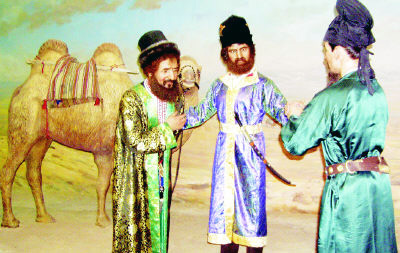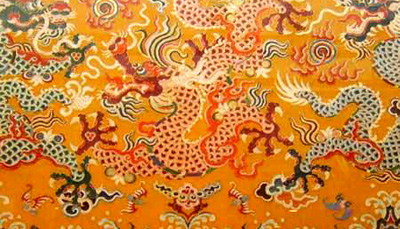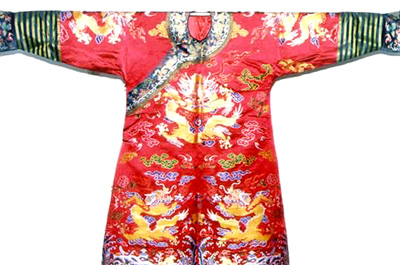
The ancient Silk Road in northwest China has a history of more than two thousand years. Originally, the Chinese traded silk internally within the empire. Caravans from the empire's interior would carry silk to the western edges of the region. They were often attacked by the small Central Asian tribes who wanted to capture the traders' valuable commodities.
In order to protect these caravans and assure the safety of the trade, the Han Government dispatched General Zhangqian as an envoy to build good relationships with these tribes. Starting from Chang'an, today's Xi'an, which was the capital of the Western Han Dynasty, Zhang led his team across the vast Western Regions and reached Loulan, Guizi and Yutian states and established trade relations with these small kingdoms. Loulan, Guizi and Yutian were three important states in the Western Region at that time. They were all abandoned for uncertain reasons and travelers today can see ruins of these three once flourishing places.

Zhang's officers went even further into the central Asia. All of the kingdoms that Zhang and his team had visited sent their envoys to visit Chang'an (today’s Xi'an) to express their appreciation for the new relationship and show their respect to the Han Government. From then on, merchants could travel on the silk route safely, and they began to explore this new route in order to carry silk from China to other parts of the world.
The famous Chinese Monk Xuanzang in Tang Dynasty traveled along the Silk Road during the Tang Dynasty. Xuanzhang began his trip from Chang'an (today's Xian) and passed through the Gansu Corridor, Hami, Turpan and continued his journey westward to India. Xuanzang was surprised by the warm reception he received along his way. It was commonly believed that people in those states were brutal, wild and uncontrollable. Xuangzang's trip changed the altitude toward the nomadic tribes in the Western Region and this contributed greatly to the Tang government's friendly relationship with these states. By 760 AD, the Tang Government had lost control of the Western Region and trade on the Silk Road was halted.


It revived tremendously under the Yuan Dynasty during the eleventh and twelfth centuries when China became largely dependent on its silk trade. Genghis Khan conquered all the small states, unified China and built a large empire under his rule. Trade along the Silk Road reached its zenith during this period. The famous traveler Marco Polo traveled along the Silk Road visiting Dadu that is today's Beijing and wrote his famous book about the orient.
As overland trade became increasingly dangerous, and travel by sea became more popular, trade along the Silk Road declined. While the Chinese did maintain a silk-fur trade with the Russians north of the original Silk Route, by the end of the fourteenth century, trade and travel along the road had decreased significantly.